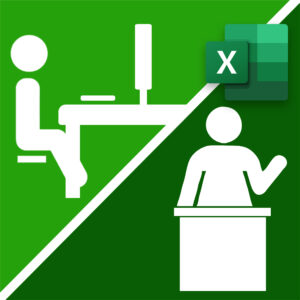Training Excel skills effectively requires a focused approach that combines clear goals with hands-on problem solving. Excel is a powerful tool used across many fields, and building strong skills can improve productivity and accuracy. By setting specific learning objectives and practicing real-world tasks, learners can develop confidence and mastery step by step. This method encourages active learning, making it easier to understand complex features and apply them correctly. Practical problem solving helps to reinforce concepts and ensures that users can handle common challenges in their daily work.
To train Excel skills with goal-based lessons and practical problem solving, consider these key strategies:
- Define Clear Learning Goals
Start by identifying what you want to achieve. Goals might include mastering formulas, creating charts, or managing large datasets. Setting targets helps to focus your learning sessions and measure progress.
- Break Lessons into Manageable Sections
Divide the material into small, focused lessons. For example, dedicate one session to learning SUM and AVERAGE functions, another to IF statements, and another to pivot tables. This approach makes learning less overwhelming.
- Use Practical Examples
Apply concepts to real problems. Instead of just reading about VLOOKUP, learn Excel practice by matching data across tables. Working on meaningful examples helps you see how Excel can solve actual challenges.

- Practice Regularly
Consistent practice is essential. Even short daily exercises reinforce skills better than irregular, long sessions. Regular use builds familiarity and speed.
- Solve Problems Step by Step
When faced with a problem, break it down. Understand what the question asks, identify the data needed, and decide which Excel tools to use. This logical process improves problem-solving skills and reduces mistakes.
- Review and Reflect
After completing tasks, review your work. Check for errors and think about how the solution could be improved or done more efficiently. Reflection strengthens understanding and encourages continuous improvement.
- Explore Advanced Features Gradually
Once comfortable with basics, move on to more advanced tools like conditional formatting, data validation, or macros. Learning these features expands your capability and makes your work more powerful.
Summary of Key Points:
- Set specific, achievable learning goals.
- Break learning into small lessons.
- Use real-world examples for practice.
- Practice consistently and often.
- Approach problems methodically, step by step.
- Review work and reflect on improvements.
- Gradually explore advanced Excel features.
By following these strategies, you create a structured and effective learning path for Excel. Goal-based lessons keep you focused, while practical problem solving ensures you can apply what you learn. This combination helps you build skills faster and retain knowledge longer. Training with clear objectives and hands-on tasks is the most reliable way to become proficient in Excel and tackle everyday data challenges confidently.




